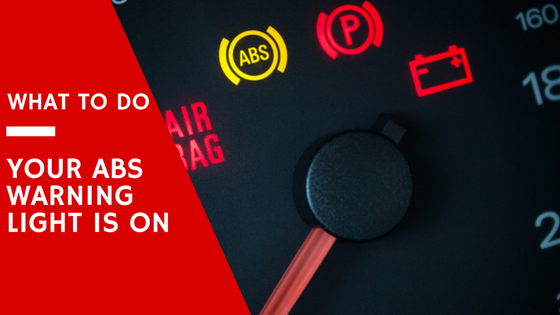We all know that cars have become more high-tech over the past several decades.
What hasn’t? Technology has changed the way people go about their daily lives, even making things like vehicular maintenance a little easier to detect for the driver.
But just because a car has an automatic alert system that tells the owner when something isn’t right, doesn’t mean the owner will always know how to respond. Some people find they’re scratching their head when the ABS light comes on in their vehicle.
What does this alert mean? And how do you go about fixing it? Understanding these facts can help any car owner discover what actions they need to take with their vehicle, and ensure they keep said vehicle functioning properly.
What Is An ABS Warning Light?
An ABS light is an alert that lets a driver know when there is a problem with their anti-locking brake system. The light is located on the dash, and is usually colored yellow, orange, or red.
Anti-lock brake systems were created to help drivers maintain better control of their vehicle even when they’re forced to brake quickly and unexpectedly. By monitoring pressure in the brake lines, the system controls the tires’ rotation speeds and stops the vehicle from skidding out of control. Vehicles with anti-lock brakes can decrease the chance of accidents by about 18 percent.
When the light comes on, it could mean there’s a problem with brake fluid levels, hydraulic valves, or even something simple like the emergency brake.
How To Get The Light To Go Off
The ABS light usually illuminates momentarily along with all the other lights when you first start your vehicle. This is normal and is known as a bulb check. If the light doesn’t come on here, chances are the bulb, or a piece of connected circuitry, may need replacing.
The first thing to check is your emergency brake – even if it isn’t applied, it could still trigger the ABS warning light if it isn’t pushed all the way down. If this didn’t solve the problem, the next step is to see if you need more brake fluid. You should be able to tell the type your car takes by information written on the reservoir cap. If not, check your owner’s manual or look for the specs on your car manufacturer’s website.
If these common solutions don’t help, you may have an issue with hydraulic circuits or even the sensors the ABS system uses to activate. Since these are more complex causes of the problem, sometimes additional steps are needed.
Getting Help Turning Your ABS Light Off
Code readers are a popular tool many car owners use to detect exactly what is wrong with their vehicle. For complex issues, calling in professional mechanics can help you ensure your ABS system works safely and efficiently.
Want the products designed to keep your car in great shape? Contact Berryman Products today!

